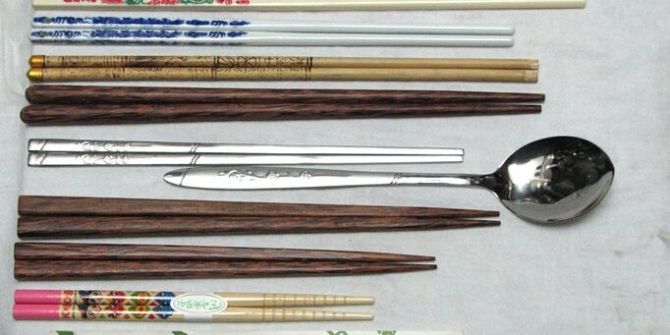Handsome and Always Awaited for His Photos, 5 Korean Actors with the Most Followers on Instagram: Park Seo Joon - Lee Min Ho
Who is the handsome Korean actor whose Instagram photos are you most excited for?

Kapanlagi.com - Chopsticks are one of the cultures that can be found in Eastern people. Chopsticks are considered the same and universal in every Asian country. Unlike Westerners who prefer to use forks and spoons when they eat.
However, there are differences in the shape, length, and material of chopsticks in each country, especially the three countries that will be discussed this time, namely Korea, Japan, and China. What are they like?
Chopsticks used by Chinese people generally have long chopsticks made of smoothed wood (although now hard plastic chopsticks are also found). Most of the chopsticks have a square shape at the top and round at the bottom.
Like chopsticks in general, the purpose of making this shape is to be used for certain foods. Chinese cuisine is usually oily and made with lots of sauce. The presentation is also done in a family style. This is what makes long chopsticks ideal for reaching distant dishes, sharing, and the shape at the top and base of the chopsticks makes it easier to hold oily and soupy foods. China has been using chopsticks for the longest time, around 3000 years ago.
Well, unlike Chinese chopsticks, the use of chopsticks in Japan began about 400 years ago. The shape of the chopsticks is the shortest compared to China and Korea. However, the material used is the same as China, which is made of wood.
But another difference is the thin shape, making it ideal for various types of noodles. Japan also does not share dishes. They prefer more personal food, so the chopsticks they make are also adjusted accordingly.
So what about Korean chopsticks? Korean chopsticks are not like long Chinese chopsticks or short Japanese chopsticks. Korean chopsticks are made of metal and have a flat shape.
Do you know why Koreans started using metal chopsticks? Metal chopsticks make less rice stick to the metal compared to wood. This makes it look cleaner when eating than using wooden chopsticks.
In addition, durability and environmental friendliness are also considerations for continuing to use metal chopsticks. This is also proven by the many metal chopsticks that have survived since ancient Korea and have become antiques. Unfortunately, they cannot be displayed in museums due to their large numbers.

This is the difference between Chinese, Japanese, and Korean chopsticks © www.gastrotourseoul.com
As quoted from prkorea.com, metal is also believed to be able to detect poison in food. The history begins with the Baekje kingdom using silverware that would change color when in contact with any poison in food because silver is very sensitive when exposed to arsenic sulfide.
Although the exact history of the use of metal chopsticks cannot be confirmed. But what is certain is that Korea started using chopsticks about 1800 years ago. Now, do you know the difference between Korean, Japanese, and Chinese chopsticks?
(kpl/mit)
Cobain For You Page (FYP) Yang kamu suka ada di sini,
lihat isinya
Who is the handsome Korean actor whose Instagram photos are you most excited for?
Already beautiful and talented, these K-Pop idols are also proficient in English.
Anya Geraldine is one of the many local celebrities who are infatuated with the character Captain Ri Jung Hyuk in the drama 'CRASH LANDING ON YOU'.
5 beautiful Korean actresses with the highest number of Instagram followers, including Park Shin Hye and Suzy.
Did you know that these Korean actors prefer love over friendship?
Kang Ha Neul denies dating rumors.
Who has watched the Korean drama Queen Seon Deok? Still remember how the queen wore the crown? If you remember its shape, turns out the crown has interesting facts.
King Muryeong's tomb is the only royal tomb from the Three Kingdoms Period that has been identified. How was King Muryeong's tomb discovered?
One of the legacies of the Joseon Dynasty is the royal tombs. It is very rare to have well-preserved royal tombs of a dynasty throughout the world after passing centuries. What are some interesting facts about the royal tombs of the Joseon Dynasty?
This Original Korean Calendar System was created in 1443, or the 15th year of King Sejong's reign during the Joseon Dynasty. What is the history behind its creation?
Have you ever heard of Arirang, a Korean folk song? Here are some interesting facts about Arirang.
Joseonmal Keunsajeon (Great Korean Language Dictionary) which became the first Korean language dictionary. The dictionary has been lost since it was confiscated by the police during the Japanese Occupation from 1910 to 1945. What is its history like?